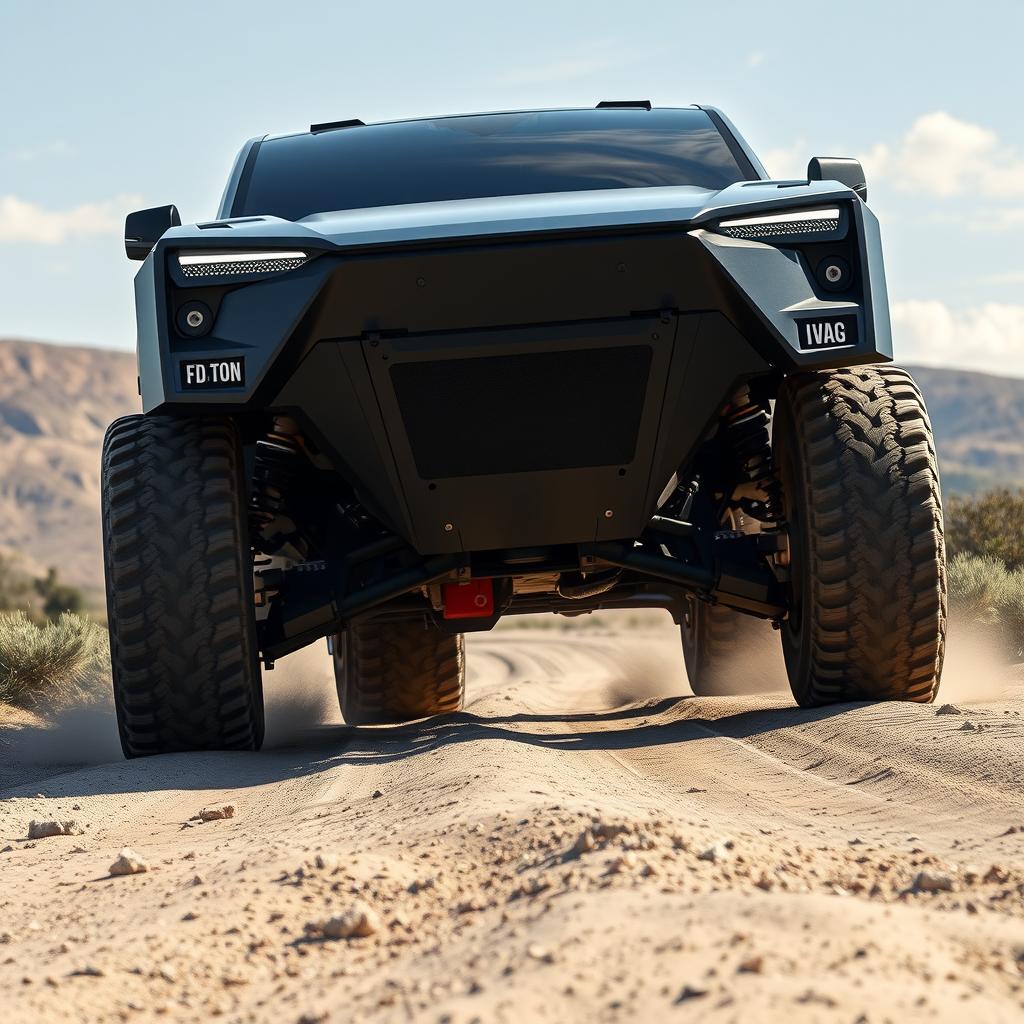Are Tesla Car Sales Up Or Down?
Are Tesla car sales up or down? That’s the question on everyone’s mind—investors, EV enthusiasts, and potential buyers alike.
With Tesla leading the electric vehicle (EV) industry for years, market fluctuations and increased competition have raised concerns about whether its sales are growing or declining.
Let’s take a closer look at the numbers and trends.
Are Tesla Car Sales Up or Down?
Both. Tesla’s sales have fluctuated, with some quarters showing growth and others reflecting a slowdown.
Key factors influencing Tesla’s sales:
- Market competition – More automakers are producing EVs.
- Economic conditions – Inflation and interest rates impact consumer demand.
- Government policies – EV tax incentives affect affordability.
- Pricing strategy – Tesla’s frequent price adjustments impact sales volume.
While Tesla remains the best-selling EV brand, sales trends vary depending on the region and market conditions.
What Do Tesla’s Sales Numbers Show?
Tesla’s sales have seen both growth and declines, depending on the period and location.
Recent trends:
- Global sales remain strong, with Tesla leading the EV industry.
- China sales fluctuate due to increased competition from BYD and other brands.
- U.S. and European markets have seen mixed results, with some quarters showing record deliveries and others reflecting slowed demand.
- Luxury models (Model S & Model X) have seen slower sales, while the Model 3 and Model Y remain bestsellers.
Despite some slowdowns, Tesla continues to lead the EV sector overall.
Why Are Tesla Sales Going Up?
Tesla has seen growth in several key areas.
1. Increased Production Capacity
With new Gigafactories in Berlin and Austin, Tesla has ramped up production.
How this helps sales:
- More vehicles available for delivery.
- Reduced wait times for customers.
- Lower production costs, allowing for competitive pricing.
As Tesla increases manufacturing capacity, more cars reach customers, driving sales growth.
2. Price Cuts Boosting Demand
Recent price reductions have made Tesla vehicles more affordable.
Effects of price cuts:
- Lower prices attract more buyers.
- Increased demand for the Model 3 and Model Y.
- Competitive pricing compared to other EV brands.
More affordable Teslas mean more people can enter the EV market.
3. Expansion into New Markets
Tesla is aggressively expanding into new regions.
Key areas of growth:
- China – Tesla’s Shanghai Gigafactory produces vehicles at scale.
- Europe – The Berlin Gigafactory meets rising demand.
- Potential India entry – Tesla is exploring new markets.
By entering new markets, Tesla gains access to more customers, increasing sales.
Why Are Tesla Sales Going Down?
Despite growth in some areas, Tesla faces several challenges.
1. Rising Competition
Other automakers are catching up in the EV race.
Key competitors:
- BYD – China’s top EV maker is challenging Tesla’s dominance.
- Ford & GM – Expanding their electric vehicle lineups.
- Hyundai & Kia – Offering affordable and competitive EVs.
- Rivian & Lucid – Targeting the premium EV market.
With more EV options available, some buyers are choosing alternatives to Tesla.
2. Tesla’s Pricing Uncertainty
Frequent price changes can cause hesitation among buyers.
Challenges with Tesla’s pricing strategy:
- Frequent price cuts make buyers wait before purchasing.
- Lower resale values due to price fluctuations.
- Premium models face stronger competition in the luxury segment.
While lower prices boost short-term demand, they can also create uncertainty.
3. Economic Factors
Macroeconomic conditions impact Tesla’s sales.
Key challenges:
- High interest rates make financing Teslas more expensive.
- Inflation reduces consumer spending.
- Market uncertainty affects investor confidence in Tesla stock.
A weaker economy can slow car sales, including Tesla’s.
Which Tesla Models Are Selling Well?
Despite some declines, certain Tesla models remain in high demand.
1. Tesla Model Y
One of the world’s best-selling EVs.
- Strong demand in the U.S., Europe, and China.
- Competitive pricing due to recent cuts.
- Spacious design appeals to families and SUV buyers.
2. Tesla Model 3
Remains Tesla’s most popular sedan.
- Affordable compared to luxury EV alternatives.
- Improved battery efficiency and tech features.
- Competes well against Hyundai, Ford, and Volkswagen EVs.
Which Tesla Models Are Seeing Declines?
Luxury models have seen slower sales.
1. Tesla Model S & Model X
- High price points make them less attractive.
- Luxury EV competitors (Lucid, Mercedes, Porsche) offer alternatives.
- Frequent updates and redesigns create hesitation among buyers.
Final Verdict: Are Tesla Car Sales Up or Down?
Tesla’s sales trends are mixed—some areas are growing, while others are slowing.
Key takeaways:
- Production growth and price cuts have boosted demand.
- Economic factors and rising competition create challenges.
- The Model 3 and Model Y continue to dominate sales.
- Luxury models like the Model S and Model X are seeing slower demand.
- Global expansion and upcoming models (Cybertruck, budget Tesla) could drive future growth.
While Tesla’s sales have ups and downs, the company remains the leading EV manufacturer worldwide.
FAQs
Are Tesla car sales increasing or decreasing?
Both. Sales have fluctuated, with some quarters showing record deliveries and others seeing a slowdown.
Which Tesla models are selling the most?
The Model Y and Model 3 remain Tesla’s top-selling vehicles globally.
Why are some Tesla models seeing a sales decline?
Luxury models like the Model S and Model X face competition from other premium EVs.
How do Tesla’s price cuts impact sales?
Price cuts increase demand but also create uncertainty among buyers and impact resale values.
Will Tesla sales grow in the future?
With new models like the Cybertruck and an affordable Tesla, future sales growth is likely.
That wraps up the first half. Ready for the next 1000 words?

Will Tesla’s Price Cuts Continue to Boost Sales?
Tesla’s frequent price adjustments have played a major role in shaping demand.
Effects of Tesla’s pricing strategy:
- Lower prices make Tesla models more attractive to new buyers.
- Some consumers delay purchases, waiting for additional price drops.
- Resale values fluctuate due to unpredictable pricing changes.
While price cuts have driven short-term demand, Tesla needs a long-term pricing strategy for stability.
Will the Cybertruck Increase Tesla’s Sales?
The Cybertruck is one of Tesla’s most anticipated vehicles and could significantly impact sales.
Reasons why the Cybertruck might boost sales:
- It enters the highly competitive and lucrative pickup truck market.
- Over a million pre-orders suggest strong initial demand.
- Its unique design and features differentiate it from other EV trucks.
If Tesla successfully delivers the Cybertruck, it could generate major revenue and increase overall sales.
Is Tesla Expanding into New Markets?
Yes, Tesla is aggressively expanding globally to sustain sales growth.
Key markets Tesla is focusing on:
- China – The Shanghai Gigafactory plays a crucial role in global production.
- Europe – The Berlin Gigafactory allows Tesla to compete with European automakers.
- India – Tesla is considering entering India’s growing EV market.
Expanding into new regions helps Tesla maintain strong sales despite competition in its core markets.
Will Tesla Release a More Affordable Model?
Tesla has hinted at a budget-friendly EV that could significantly increase sales.
What we know about Tesla’s rumored low-cost EV:
- Expected to be priced around $25,000.
- Designed to compete with affordable EVs from Hyundai, Ford, and Volkswagen.
- May use Tesla’s next-generation battery technology to lower production costs.
A more affordable Tesla could open the brand to a much wider customer base.
How Does Tesla’s Sales Compare to Other EV Brands?
Tesla still leads in EV sales, but competition is growing.
Comparison of EV market share:
- Tesla – Remains the top-selling EV brand worldwide.
- BYD – Expanding quickly and challenging Tesla in China.
- Ford – Increasing its EV presence with the Mustang Mach-E and F-150 Lightning.
- Hyundai/Kia – Offering competitive and affordable EVs.
While Tesla remains the dominant player, other automakers are closing the gap.
Will Tesla’s Supercharger Network Help Maintain Sales?
Yes, Tesla’s charging infrastructure is a key advantage over competitors.
Why Tesla’s Supercharger network is important:
- It is the largest and most reliable fast-charging network worldwide.
- It reduces range anxiety for Tesla owners.
- Opening Superchargers to other EV brands could generate additional revenue.
Tesla’s extensive charging network continues to be a selling point for potential buyers.
Is Tesla Facing Production Challenges?
Yes, supply chain disruptions and production bottlenecks have impacted Tesla’s ability to meet demand.
Challenges include:
- Shortages of key materials like lithium and semiconductors.
- Delays in ramping up production at new Gigafactories.
- Global logistics disruptions affecting vehicle deliveries.
Addressing these challenges will be critical to sustaining Tesla’s growth.
How Will Government Policies Impact Tesla’s Future?
Government regulations and incentives play a major role in Tesla’s sales performance.
How policies affect Tesla:
- EV tax credits encourage adoption but are subject to change.
- Emissions regulations push automakers toward electrification.
- Trade policies and tariffs impact Tesla’s global expansion strategy.
Favorable policies can boost sales, while regulatory changes could pose challenges.
What’s Next for Tesla?
Despite short-term challenges, Tesla is positioned for long-term success.
Key factors for Tesla’s future growth:
- New models – The Cybertruck and budget Tesla could increase demand.
- Global expansion – Entering new markets will sustain growth.
- Technology advancements – Battery improvements and AI-driven features will enhance Tesla’s appeal.
- Competitive pricing – Balancing affordability and profitability is crucial.
If Tesla continues to innovate, it will remain a leading force in the EV industry.
Final Verdict: Are Tesla Car Sales Up or Down?
While Tesla’s sales have seen ups and downs, the company remains a dominant EV manufacturer.
Key takeaways:
- Production growth and price cuts have boosted demand.
- Economic conditions and rising competition create challenges.
- The Model 3 and Model Y continue to dominate sales.
- Luxury models like the Model S and Model X are seeing slower demand.
- Global expansion and upcoming models (Cybertruck, budget Tesla) could drive future growth.
While Tesla’s sales fluctuate, the company remains a leader in the electric vehicle industry.
FAQs
Are Tesla car sales increasing or decreasing?
Both. Some quarters have seen record deliveries, while others have reflected slower demand.
Which Tesla models are selling the most?
The Model Y and Model 3 remain Tesla’s top-selling vehicles globally.
Why are some Tesla models seeing a sales decline?
Luxury models like the Model S and Model X face competition from other premium EVs.
How do Tesla’s price cuts impact sales?
Price cuts increase demand but also create uncertainty among buyers and impact resale values.
Will Tesla sales grow in the future?
With new models like the Cybertruck and an affordable Tesla, future sales growth is likely.
Overall, while Tesla’s sales have ups and downs, the company remains one of the most influential forces in the EV market.



